


ISAAC NEWTON 1642 -
Acknowledgements
Newton: by the German/British painter Godfrey Kneller (1646-
xxxxxThe Englishman Isaac Newton, one of the greatest mathematicians and scientists of all time, made three major discoveries in the mid-
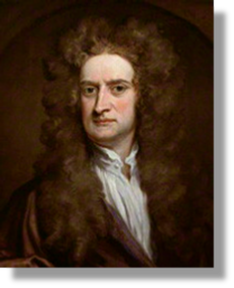 xxxxxThe Englishman Isaac Newton, one of the greatest mathematicians and scientists of all time, was born in a small manor house at Woolsthorpe, near Grantham in Lincolnshire. He had an unsettled, troubled childhood. His mother remarried when he was two, and he was then separated from her for some nine years, being brought up by his grandmother. In these circumstances he developed an acute sense of insecurity and, as a lonely intellectual, came to react violently against the slightest hint of criticism. Indeed, at one time during his career his genius verged on a state of mental disorder. For some six years, starting around 1678, he virtually withdrew from intellectual society, immersing himself in religious controversy, denying the doctrine of the Trinity, and dabbling in the occult. He eventually returned to his studies, but for many years his findings were confined to his notebook or circulated to only a small circle of interested parties. This in no way detracted from the enormous value of his achievements, but the delayed publication of his findings did involve him in a number of unpleasant controversies.
xxxxxThe Englishman Isaac Newton, one of the greatest mathematicians and scientists of all time, was born in a small manor house at Woolsthorpe, near Grantham in Lincolnshire. He had an unsettled, troubled childhood. His mother remarried when he was two, and he was then separated from her for some nine years, being brought up by his grandmother. In these circumstances he developed an acute sense of insecurity and, as a lonely intellectual, came to react violently against the slightest hint of criticism. Indeed, at one time during his career his genius verged on a state of mental disorder. For some six years, starting around 1678, he virtually withdrew from intellectual society, immersing himself in religious controversy, denying the doctrine of the Trinity, and dabbling in the occult. He eventually returned to his studies, but for many years his findings were confined to his notebook or circulated to only a small circle of interested parties. This in no way detracted from the enormous value of his achievements, but the delayed publication of his findings did involve him in a number of unpleasant controversies.
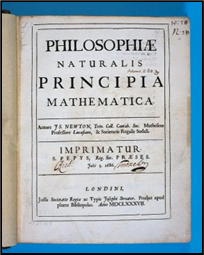
xxxxxHe went to study at Trinity College, Cambridge in 1661, and there he showed a particular interest in the works of the French mathematician René Descartes and the Irish physicist Robert Boyle. So soon did he reveal his extraordinary talent, that he was appointed a professor of mathematics there at the age of twenty-
xxxxxNewton's first major achievement was in the field of mathematics. In 1666 he developed what he termed his "notation of Fluxions”, known today as the calculus (meaning "pebble" in Latin). Unfortunately he did not publish his findings on returning to Cambridge -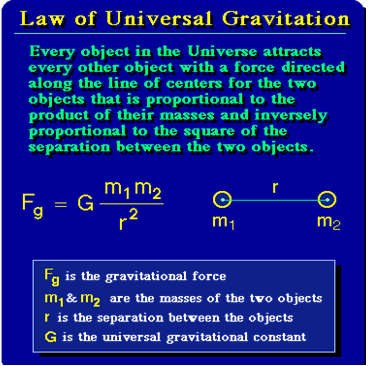 own supporters to prove his case! In addition, as president of the Royal Society he used his position to publish a condemnation of Leibniz, openly accusing him of deliberate plagiarism. This unedifying wrangling -
own supporters to prove his case! In addition, as president of the Royal Society he used his position to publish a condemnation of Leibniz, openly accusing him of deliberate plagiarism. This unedifying wrangling -
xxxxxIf legend is to be believed, then Newton began to delve into the phenomenon of gravitation in 1665, when he saw an apple fall from a tree while sitting in the orchard of his family home. If an apple were attracted or pulled to the earth by some hidden force, then could this be the same force that kept the moon orbiting the earth, and the planets orbiting the sun? It was by applying this theory of gravity that he later calculated the orbit of the moon, and gave credence to the laws of planetary motion which had been reached earlier by the German astronomer Johannes Kepler during his close observation of the planets. His findings were partially contained in his tract On the Motion of Bodies in Orbit, written in 1684, and expanded and more fully explained in his Principia.
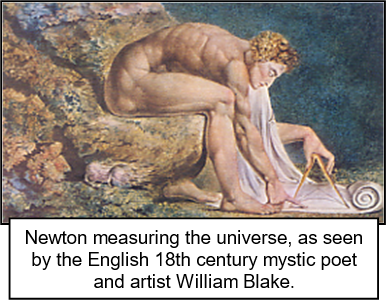 xxxxxThe Principia, a work in three parts, must be regarded as one of the most important scientific books ever published, a revolutionary work which proved the basis for future advances in physics, astronomy and engineering. It is somewhat alarming to note, therefore, that such an epoch-
xxxxxThe Principia, a work in three parts, must be regarded as one of the most important scientific books ever published, a revolutionary work which proved the basis for future advances in physics, astronomy and engineering. It is somewhat alarming to note, therefore, that such an epoch-
xxxxxOnce in print, however, the book involved Newton in yet another lengthy and bitter dispute, this time with the English scientist Robert Hooke, who claimed that he had been the first to discover the inverse square law of gravitation, and that Newton had stolen it from him. Such was depth of Newton's anger towards Hooke -
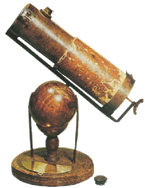 xxxxxWhatever the rights and wrongs of this matter, it was clearly Newton who pulled together the work of Galileo, Copernicus and Kepler and formed a scientific theory which began to make sense. But this was only one of the many contributions made by this remarkable man. As early as 1663, for example, he had discovered the binomial theorem, and five years later his research into the properties of light led him to construct the first reflecting telescope, produced to overcome the distortions then associated with the use of a glass lens. He made a second version in 1671 and, on presenting it to the Royal Society, was admitted to the society that year.
xxxxxWhatever the rights and wrongs of this matter, it was clearly Newton who pulled together the work of Galileo, Copernicus and Kepler and formed a scientific theory which began to make sense. But this was only one of the many contributions made by this remarkable man. As early as 1663, for example, he had discovered the binomial theorem, and five years later his research into the properties of light led him to construct the first reflecting telescope, produced to overcome the distortions then associated with the use of a glass lens. He made a second version in 1671 and, on presenting it to the Royal Society, was admitted to the society that year.
xxxxxIn these early years Newton took only a small part in public life. In 1687, however, when James II was busy appointing Roman Catholics to places of high office, he was a member of a delegation which tried to dissuade the king from interfering in the administration of universities. And two years later he became a member of parliament, representing Cambridge University. As we shall see, in his later years he tended to move away from scientific research, settling in London and finding a new outlet for his 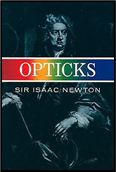 extraordinary ability.
extraordinary ability.
xxxxxBut even then his life was not without controversy. Quite apart from his continuing battle of words with Leibniz, he became involved in a running and bitter dispute with the astronomer John Flamsteed. And, as we shall see, it was during this period, in 1704 (AN), that he published his second major work, his Opticks, a treatise containing important advances as to the properties of light and colour.
xxxxxIncidentally, Newton’s law of universal gravity stated that “every body attracts every other with a force directly proportional to the product of their masses and inversely proportional to the square of the distance between them.” This law enabled him to predict all of the planetary motions, the tides, and the movements of the moon and the comets.
J2-


